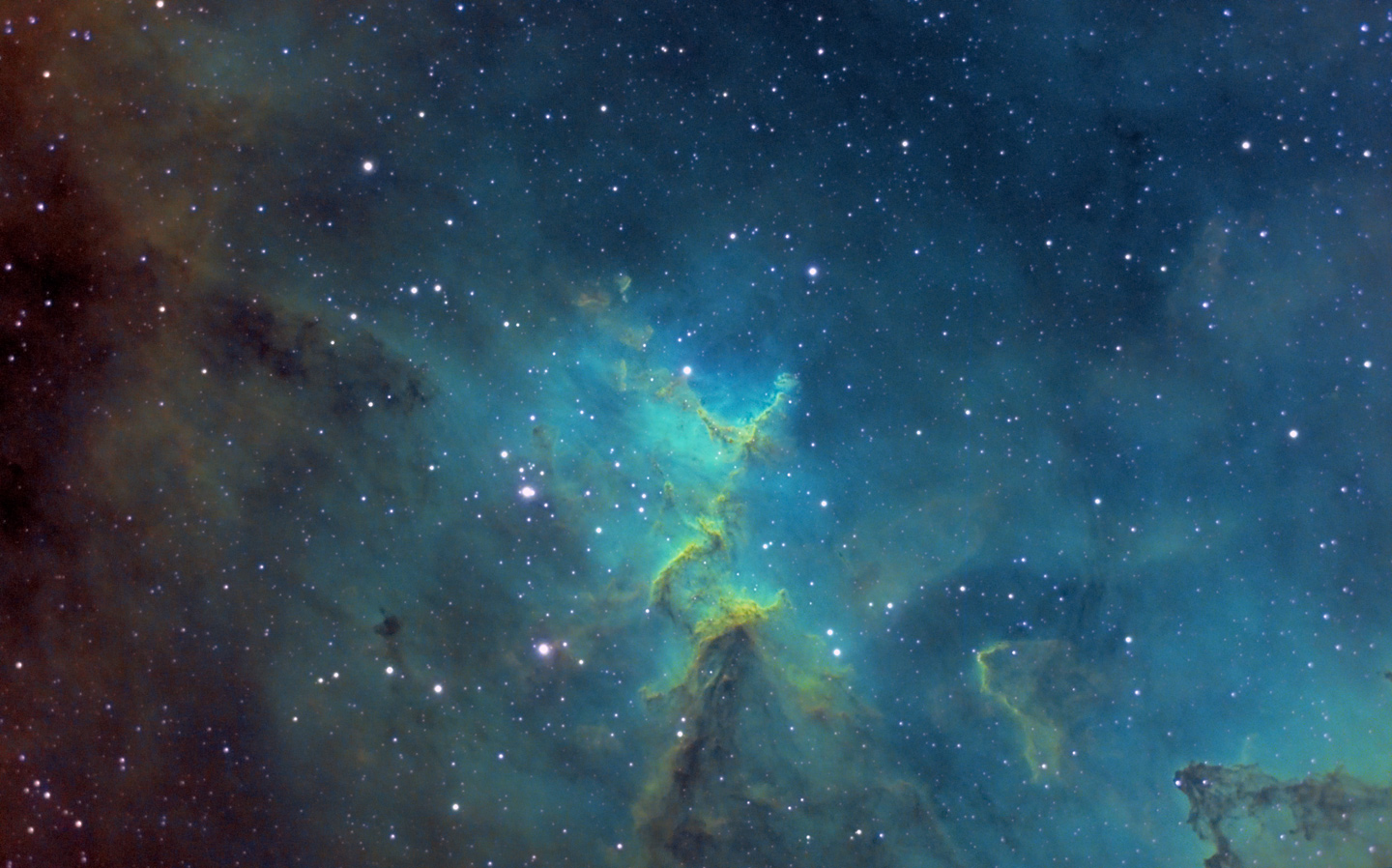
Optics/mount : 12″ACF 2.7m AP-Reduzer Alt-5
Camera/filters: Atik 11002 Astrodon LRGB HA5nm
Exposure: 22x900ha ,22×900 SII 10×900 OIII 1x1bin
The bright star cluster ( “open cluster”) centered in this image is known as Melotte15 after its discover, Philibert Jacques Melotte (1880-1961). Melotte 15 is embedded within and illuminates the central portion of the much larger glowing nebula identified as IC 1805. The interesting structure in the center of the image is a giant area of hydrogen gas that is caused to glow by the intense ultraviolet radiation from the massive stars of the Melotte 15 star cluster. It is estimated that this illuminated gas is more than 50 light years from the Melotte15 stars.
The nebula’s intense red output and its configuration are driven by the radiation emanating from a small group of stars near the nebula’s center. This open cluster of stars known as Melotte 15 contains a few bright stars nearly 50 times the mass of our Sun, and many more dim stars that are only a fraction of our Sun’s mass. The cluster used to contain a microquasar that was expelled millions of years ago.
The Heart Nebula, IC 1805, Sh2-190, lies some 7500 light years away from Earth and is located in the Perseus Arm of the Galaxy in the constellation Cassiopeia. This is an emission nebula showing glowing gas and darker dust lanes. The nebula is formed by plasma of ionized hydrogen and free electrons.@ wikipdia
